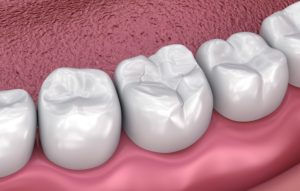 Tooth decay is the most common oral health condition for Americans of all ages. Thankfully, you can avoid tooth loss with a dental filling. It provides a long-term solution to preserve your natural smile; however, it won’t last forever. How long do fillings last? Various factors affect their lifespans. Over time, you may notice some signs you need a replacement. Here’s how long you can expect your filling to last before needing a new one.
Tooth decay is the most common oral health condition for Americans of all ages. Thankfully, you can avoid tooth loss with a dental filling. It provides a long-term solution to preserve your natural smile; however, it won’t last forever. How long do fillings last? Various factors affect their lifespans. Over time, you may notice some signs you need a replacement. Here’s how long you can expect your filling to last before needing a new one.
Life Expectancy of Dental Fillings
A filling can last for 7-20 years. The vast difference is attributed to several things, like the material used because it can affect their durability. On average, certain materials have an average lifetime of:
- Amalgam: 15 years
- Composite: 7 years
- Ceramic: 15 years
- Glass Ionomer: 5 years
Besides the type of filling, other factors will influence its longevity, which include:
- Location: Back teeth undergo more wear and tear, so they may have shorter life expectancies than those in the front.
- Oral Hygiene: Brushing, flossing, and visiting your dentist every 6 months for a cleaning and checkup will keep tooth decay at bay.
- Diet: You may need a replacement sooner if you consume a lot of sugar or eat hard and sticky foods often.
- Oral Habits: Grinding your teeth, chewing on your fingernails, or chomping on ice can damage fillings.
- Size: Larger fillings may need to be replaced sooner than when treating smaller cavities.
Signs Your Filling Needs Replacing
No matter how well you care for your filling, there will come a time when you’ll need a new one. A failing filling can be detected during routine dental appointments to treat the issue before it turns into a bigger problem. However, it’s not unusual to develop symptoms of failure in between your regular appointments, which may include:
- Visible cracks or chips
- Toothache or sensitivity
- Pain when placing pressure on the tooth
- Filling is discolored
- Filling falls out
When it’s time for a replacement, don’t worry about a long or complex procedure. Swapping the filling is nearly the same as when the original was placed. Your dentist will use special dental instruments to remove the old material and any new decay. A weak acid is applied to your tooth to open the pores in your enamel. After your tooth has been rinsed, your dentist will place the filling, which is made of a composite resin, and will blend in with your enamel. A special dental light hardens the material quickly, so you don’t need to worry about a lengthy procedure.
You’ll have peace of mind knowing your new filling can last for a decade or longer with the right care. Besides brushing and flossing, don’t forget to have a cleaning and checkup twice per year.
About Dr. Shelly Strohman
Dr. Strohman earned her dental degree at the UMKC School of Dentistry and has continued her education in advanced specialties to help her patients achieve their best smiles. If you have a filling that’s failing, contact our office today to schedule an appointment.